Photo: Jim Bennett/Getty Images
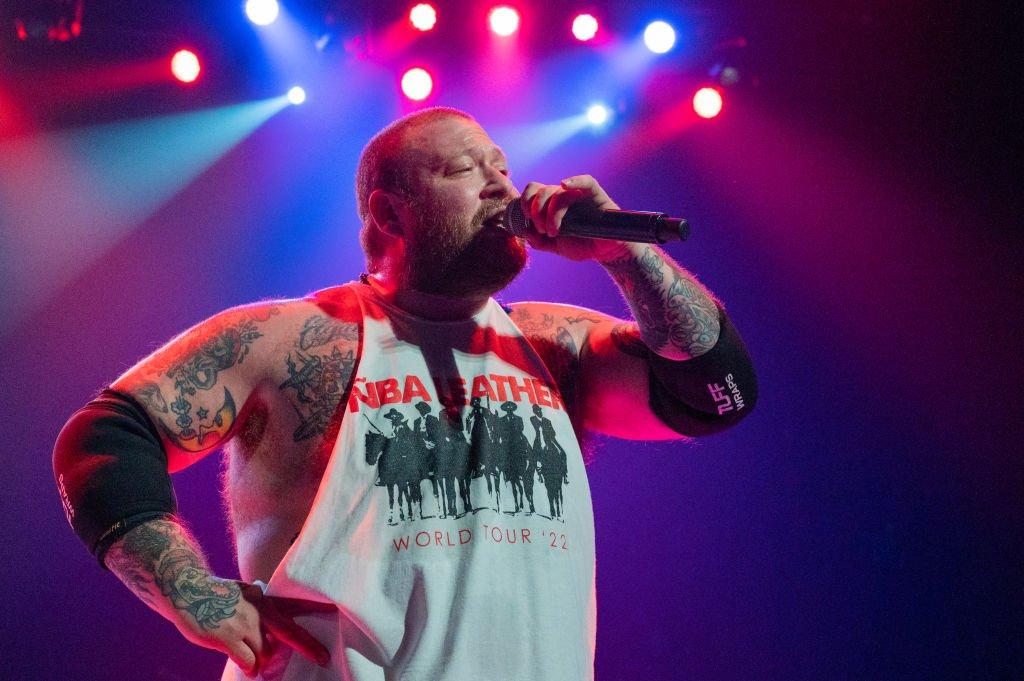
list
11 Hip-Hop Subgenres To Know: From Jersey Club To G-Funk And Drill
There’s no limit to hip-hop’s expansion, and its plethora of subgenres and here’s a look at some of the most diverse and uniquely creative subgenres that have spawned from hip-hop’s roots.
As hip-hop celebrates 50 years of musical and cultural history, GRAMMY.com is exploring the genre’s influence and international reach through the decades. Much of its success and longevity is a credit to established acts who have broken geographical barriers. Meanwhile, contemporary supernovas have driven rap forward in recent years.
Their transcendent powers have allowed hip-hop to be as cross-cultural as ever before, with the genre trickling into other musical landscapes such as reggaeton, Afrobeats, dancehall, Afro-swing, and countless others. While artists Lil Baby, 21 Savage, Lil Uzi Vert, and Future have held down the domestic fort, exports like Drake, Central Cee, and others are drawing eyes and massive crowds across country lines.
By establishing their influences, these artists have also added to the assemblage of subgenres within rap. One example is the evolution of trap and drill music, and the recent insertion of reggaeton and afro beats into the larger hip-hop sphere. Many of them have led to industry-rattling hits and GRAMMY wins, but one can’t ignore how hip-hop’s other forms have contributed to its increasingly widespread appeal.
While there’s no limit on rap’s expansion, here’s a look at some of the most diverse and uniquely creative subgenres that have spawned from hip-hop’s roots.
Boom Bap
Artists: Dave East, Joey Bada$$, Action Bronson
With a snapping drum and snare bass, boom bap became the backdrop of hip-hop’s golden age during the 1980s and early 1990s. The sound was exemplified by now-legendary artists like LL Cool J, Nas, the Notorious B.I.G., and groups like Wu-Tang Clan, A Tribe Called Quest, Mobb Deep, who were at the center of New York’s supremacy during that period.
After peaking in the late 1990s, boom bap had a resurgence during the early 2010s with the rise of Tri-State talents Joey Bada$$, Action Bronson, Dave East, and Bishop Nehru, who offered a more nuanced take on 1990s East Coast sound.
Gangsta Rap
Tales of street life are rooted in hip-hop, as it’s long reflected the reality many artists endure along their journey to stardom. With the emergence of gangsta rap in the late 1980s, the subgenre became their canvas.
Established by Philadelphia rapper Schoolly D and Ice-T, gangsta rap soon grew in popularity with legendary Southern California acts like N.W.A., Snoop Dogg, Dr. Dre, and others taking the helm in the 1980s and 90s. In time, gangsta rap spread across rap’s various regions and later inspired drill and trap music.
Trap
Artists: Young Thug, Future, 21 Savage
Among all of hip-hop’s subgenres, trap remains arguably one the most popular and widespread sounds. It started as an off-shoot of gangsta rap in the early 1990s with the emergence of Southern acts like UGK, Goodie Mob, and Three 6 Mafia, but pioneers like Young Jeezy, Gucci Mane, and T.I. elevated the once niche sound to the mainstream.
Characterized by rattling hi-hats, hard-hitting kicks and tales of street life, trap is the sound of Billboard-topping hits by the likes of Travis Scott, Lil Uzi Vert, 21 Savage, and others.
Jersey Club
Artists: UNIIQU3, Bandmanrill, Cookie Kawaii
Originally called Brick City Club, this style of electronic club music was crafted in Newark, New Jersey by DJ Tamiel. Like Baltimore Club music, it fuses house and hip-hop at a frenetic pace. The subgenres are differentiated by tempo, with Jersey club beats reaching speeds of 150 BPM compared to Baltimore’s 130 BPM.
The subgenre took a turn in the mid-2000s, with artist Chad B becoming one of the first rappers to rhyme over Jersey club beats. The relatively new subgenre continues to gain momentum with artists Bandmanrill and Cookie Kawaii producing viral TikTok hits like "Heartbroken" and "Vibe (If I Back It Up)."
Rap Rock
Artists: Lil Yachty, Kid Cudi, Lil Wayne
It’s easy to see why rappers are considered modern rock stars — with the electrifying performances and rowdy fanbases and all — and the rap rock subgenre hasn’t trailed too far behind. Artists Lil Wayne, Young Thug, Kid Cudi, and Lil Yachty have all layered their voices over thunderous, guitar-ridden beats to explore the boundless nature of rock music.
But before these artists dove into the punk world, pioneers like Run-D.M.C., Public Enemy, Beastie Boys, and producer Rick Rubin were the innovators of the rap rock movement. While it hasn’t led to Billboard hits or GRAMMY wins in recent years, it remains a point of sonic exploratio for the genre’s biggest stars.
Pop Rap
Artists: Nicki Minaj, Flo Rida, Pitbull
While gangsta rap and trap have long dominated hip-hop, pop rap artists Nicki Minaj, Pitbull, Flo Rida, and others have contributed to the genre’s expansion on a global scale. The elements of pop rap have seen many iterations over the years, with early adopters like Ja Rule and Nelly fusing melody-driven tunes with gritty lyrics in the late 1990s and early 2000s.
The subgenre is often criticized by hip-hop purists, but it’s gained considerable popularity as artists Drake, Coi Leray, Doja Cat, Wiz Khalifa, and others have endeared crowds across different genres.
Hyphy
Artists: E-40, Too-$hort, Keek Da Sneak, Mistah F.A.B.
The word "hyphy" is slang for "hyperactive," and rapper Keak Da Sneak is known for coining the term and helping shape the distinctly East Oakland sound. The hyphy movement is synonymous with the San Francisco Bay Area, where artists such as E-40, Mac Dre, Mistah F.A.B. and others created party music with pounding, fast-paced beats and lyrics often centered on partying and drug use.
The subgenre amassed mainstream success in the mid 2000s with E-40’s "Tell Me When To Go," which drew millions of hip-hop fans to the once regional sound. After the buzz faded toward the back half of the 2000s, the hyphy movement had a resurgence in the mid-2010s, with artists like Drake, YG, Mustard and others borrowing the energy-fueled sound on street hits like "Who Do You Love?" and "Why You Always Hatin?" Contemporary rap stars and Bay Area ambassadors like Larry June, P-Lo, Kamaiyah and others continue to breathe new life into hyphy culture.
Pimp Rap
Artists: Suga Free, Three 6 Mafia, UGK
The influences of pimp rap can be traced back to the popular blaxploitation films of the 1970s and the graphic depictions from ex-pimp and author Iceberg Slim. Naturally, the visual representation and narrative elements of the pimp lifestyle made its insertion into a wide variety of rap styles.
Among the most influential artists includes Ice-T, Slick Rick, Suga Free, who cascaded to popularity with the songs "Why U Bull—in’?" and "I’d Rather Give You My Bitch" in the late 1990s. And groups Three 6 Mafia and UGK were also massive influencers of pimp rap, with their playalistic and womanizing-inspired hits like "It’s Hard Out Here for a Pimp" and "Int’l Players Anthem (I Choose You)" adding to the subgenre.
G-Funk
Artists: Payroll Giovanni, Larry June, Jay Worthy
What To Know: Along with elevating talents like Eminem, 50 Cent, Kendrick Lamar, and other mainstream acts, Dr. Dre is often cited as the father of the G-funk sound. G-Funk incorporates rap and funk music of the 1970s, especially that of the Goerge Clinton-led band Parliament-Funkadelic, which Dr. Dre established with 1992’s The Chronic.
While far less popular compared to its earlier form, elements of the F-funk sound have been adopted by artists like Detroit rapper Payroll Giovanni, Larry June and Jay Worthy.
Drill
Artists: Chief Keef, G Herbo, Polo G
A mix of trap music and gangsta rap, drill emerged in Chicago in the early 2010s under artists Chief Keef, Fredo Santana, Lil Reese, G Herbo, and others. The subgenre is known for its explicit, nihilistic lyrics and untamed aggression, which can be found in the early releases of Keef and company. And while Chicago drill’s momentum subsided in the mid-2010s, a renewed Lil Durk and Polo G have helped restore its luster.
Since elevating to the mainstream in 2012, drill’s influence made its way across state and international borders. Artists Fivio Foreign, Sheff G, and the late Pop Smoke established Brooklyn drill in the late 2010s, while UK drill has been headed by stars Central Cee, Digga D, Dave, and others.
Horrorcore
Artists: Eminem, Tech N9ne, Insane Clown Posse
Horrorcore delves into violent and graphic themes like death, satanism, and cannibalism. Think death metal, but with a moody hip-hop beat overlaying the dark and often grotesque lyrics. Horrorcore records are often inspired by slasher films, and some of the most notable artists that explored the subgenre are Tech N9ne, Eminem, Mars, and Detroit-bred duo Insane Clown Posse.
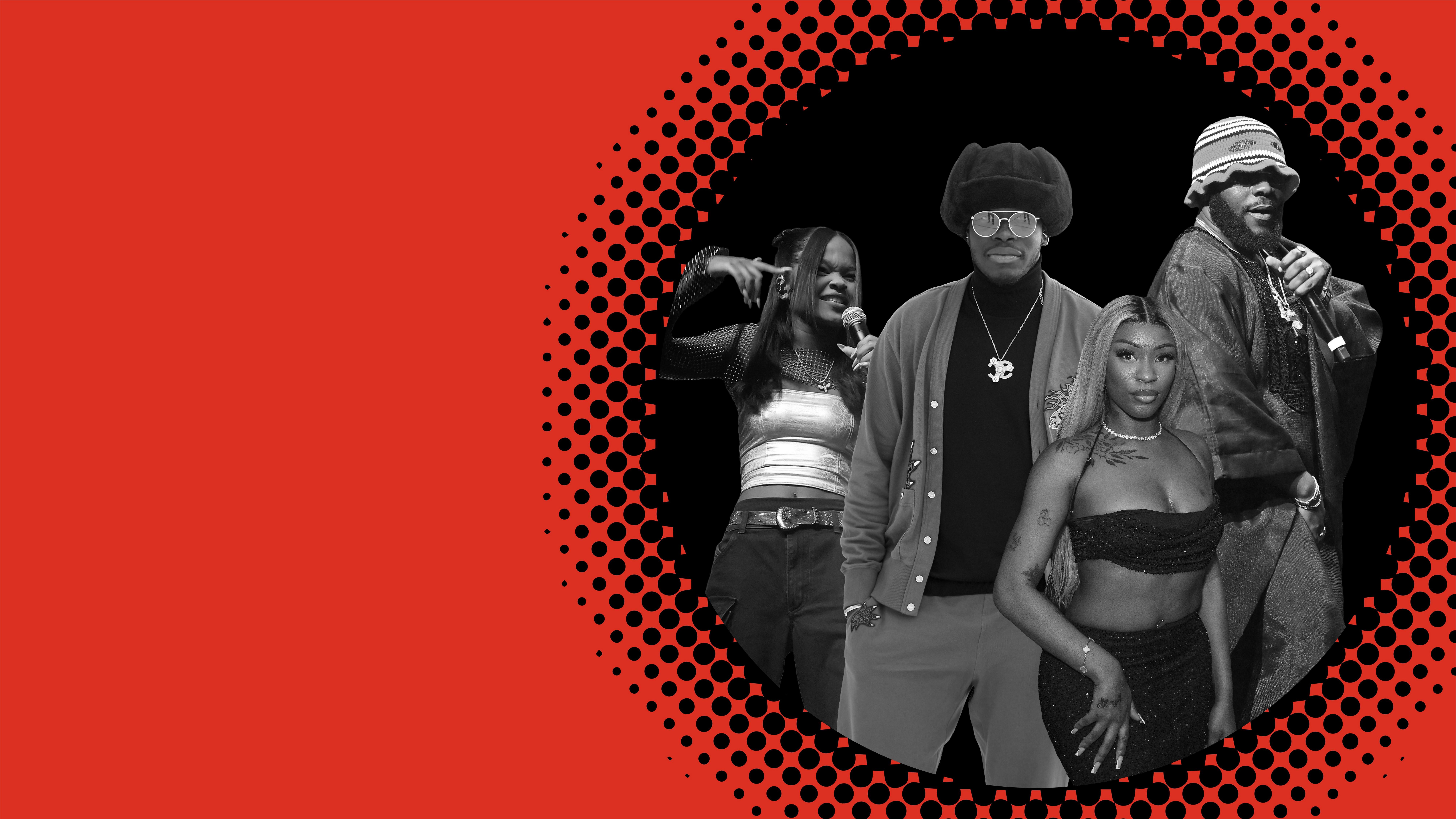
Photos: Taylor Hill/Getty Images; Stephane Cardinale - Corbis/Corbis via Getty Images; Dave Benett/Getty Images for The Standard London; Paras Griffin/Getty Images
list
10 Artists Changing The Face Of Drill: Ivorian Doll, Bobby Tootact & More
While Cash Cobain and Ice Spice bring drill music even further into the mainstream, a new generation of artists are evolving the sound of the genre. From S.Pri Noir and 163Margs, to Lismar and Jay Hound, these 10 acts should be added to your playlist.
Originating in the early 2010s on the southside of Chicago, the hip-hop subgenre drill has transcended borders to become a global phenomenon.
Characterized by a menacing and dark energy, drill music sets itself apart from traditional rap and hip-hop through its violent, aggressive lyrics and undertones. Drill music incorporates slower, heavier beats that often blend distorted 808 basslines, dark synths, and trap-style hi-hats.
The gritty, lawless sound pioneered by artists like King Louie, Chief Keef, G Herbo and GRAMMY-award winner Lil Durk remains at the core of the drill, and their influence is spreading into more mainstream acts. Artists such as Cash Cobain — whose melodic, sultry "Attitude" exemplifies sample drill and landed him at No. 25 on Billboard's Hot Rap Songs — and Ice Spice, whose bold and perky lyrics contrast drill beats. As a whole, these artists are proving that drill is more than just graphic and horrid lyrical stories; it can be fun and even make you feel like a baddie.
Variations on drill music can be heard in regions such as South America, Africa, and Europe. The controversial but incredibly popular UK drill, which was born in the south London neighborhood of Brixton, draws many aesthetic influences from Chicago drill while maintaining its own stylistic differences. Where Chicago drill is heavily influenced by trap music, UK drill can be seen as a type of British gangsta rap, or "road rap." Young UK artists like Digga D and Central Cee have taken over the genre, both scoring entries on the Billboard chart, and with Central landing features with Drake and Lil Baby.
A new generation of drill rappers are continuing to evolve the sound of the genre by combining drill beats and lyrics with a wide range of influences. Read on to learn about 10 budding drill artists whose innovative sounds and diverse perspectives are evolving the global drill landscape.
Kenzo B
When it comes to vocal adaptability, attention to detail, and charisma — Kenzo B has got it. The Bronx-born rapper has quickly risen in prominence in New York's drill music scene following 2022 singles "Bump It" and "The Realest," both of which showcased her raw energy and talent.
The self-proclaimed "Queen of Bronx drill" continues to refine her rapid-fire rhymes while maintaining a fierce competitiveness, setting her apart in the male-dominated drill space. In April, Kenzo B teamed up with Harlem rapper Bianca Bonnie to drop their ultra-femme anthem "What You Talkin Bout?"
Wolfacejoeyy
Known for his sexy drill singalongs, Wolfacejoeyy is one of the most exciting rising rappers from NYC’s "forgotten borough," Staten Island. The 21-year-old seamlessly weaves hooky, charismatic rhymes into signature Staten-style instrumentals. On songs like the viral "cake" and "wya," Joeyy taps into an alter ego that teeters between hopeless romantic and relentless f—boy, backed with dynamic hats and a heavy bass.
His highly-anticipated 13-track debut album Valentino, dropped last month and includes a feature from R&B singer Reuben Aziz and production from "Power" actor Michael Rainey Jr., who raps as WhereIs22.
S.Pri Noir
Born to a Senegalese mother and father from Guinea-Bissau, S.Pri Noir is based in France. Despite rapping in French, hip-hop artist S.Pri Noir's music is slowly transcending borders — grabbing the attention of audiences worldwide.
S.Pri Noir’s 2018 debut album Masque Blanc reached No. 18 on the Top Albums chart in France. Earlier this month, he delivered a thrilling freestyle on "On The Radar Radio," channeling his inner Cash Cobain. After a recent Instagram post, fans are speculating a potential collaboration between the two artists will drop soon.
S.Pri Noir represents the next big market in drill: Africa. Many budding artists in the genre, especially from Europe, are second or third-generation African immigrants.
Ivorian Doll
German British rapper Ivorian Doll is making a name for herself in the UK drill scene. Boldly claiming the title "Queen of Drill," she's carving out a unique niche with explosive lyrics, drill-infused tension, and undeniable pop appeal. Each of her anthems is a potent cocktail of drama and attitude, highlighting her razor-sharp signature style that's firmly anchored in unfiltered, hard-hitting lyricism.
The 26-year-old rapper debuted in 2018 as part of a duo, dropping the infectious drill track "The Situation." Since embarking on her solo journey, she's continued to captivate audiences with standout releases like "Queen of Drill," "Daily Duppy" and the buzz-worthy song "Rumour." Her ascent in the drill scene exemplifies a fresh voice bringing new energy to the genre, blending cultural influences with raw talent and unapologetic star quality.
Bobby Tootact
Harlem rapper Bobby Tootact is known for remixing popular Afro-Caribbean songs — from Afrobeats bangers such as Wizkid’s "Joro" to dancehall like Teejay’s "Drift" — into drill tracks with overtly rough lyrics. On 2023's "Real Facts" (produced by go-to mixer Lowkeymali), Bobby raps about gun violence while sampling Wizkid’s popular Afrobeats dance track "Ojuelegba."
As the child of Senegalese immigrants, Bobby's music reflects a fusion of his cultural heritage and his upbringing in Harlem. This combination allows him to create a distinctive musical identity that resonates with fans of multiple genres while merging two completely different musical worlds.
163Margs
Blending gritty lyrics with infectious beats, Nottingham's very own 163Margs has struck a chord with listeners craving traditional UK drill music from a young artist. Margs, who debuted in 2023, has already collaborated with UK heavyweights like Digga D, Bandokay, and Blanco. His debut single "Hide and Seek" propelled him into the spotlight, showcasing his raw talent and captivating flow.
At first listen, his 2024 single, "Barbies" can be confused as an ode to beautiful women, with lyrics like: "All of them Barbie pretty." Listeners later realize the song is actually about guns and street life. "The opps are wet and there's no disagreement / Ayy / fill up the wap / put teeth in."
Odumodublvck
Nigerian rapper and singer Odumodublvck is crafting a lane for himself with an alluring Afro-grime and Afro-drill sound. As a member of the hip-hop collective Anti World Gangstars, Odumodublvck creates high-energy music which features catchy, repetitive lyrics in Pidgin English and his Native Nigerian language (Igbo).
His latest project, EZIOKWU, dropped in October 2023 and includes collaborations with acclaimed artists like Fireboy DML, Wale, and Amaarae — further cementing his position as a rising star in the evolving Nigerian music landscape.
Jay Hound
Jay Hound is an upcoming drill artist hailing from a section of Manhattan's Upper West Side neighborhood and catapulted into the spotlight via his 2023 single "UKRAINE."
A collaboration with his Sweepers labelmate Jay5ive, the track features deep and vibrating bass, and garnered over seven million views on YouTube and nearly 30 million streams on Spotify. He even released an Afro-drill version of the song, which deconstructs the grittiness of the original drill track for a more light and playful dance sound.
Lismar
Dominican singer/songwriter Lismar is dominating the Dominican urban music scene with her contemporary hip-hop and drill rap. Gaining recognition on the Puerto Rican platform Freestyle Mania, Lismar's creativity and distinctive sound of which infuses both Latin and hip-hop music has earned her a growing fan base and a deal with Roc Nation.
In her new released tracks "Delincuente Con Traje" and "BZRP Music Session #60," she captivates listeners with her powerful flow and impactful lyrics that translate to "I look calm / but I was raised on the corner" and "If they close the door / I knock down the window." The rapper dropped her latest single "Mi Primer Concierto," a softer record that seamlessly integrates her Dominican heritage with rap.
Dee Billz
New York-based rapper, Dee Billz, combines bold and unapologetic lyrics while also toying with a Jersey club sound in his 2023 breakout hit "Thootie." The single took the internet by storm and racked up more than a million views across TikTok and YouTube.
Last year, the drill artist collaborated with fellow New Yorker rapper’s Kyle Richh, Jenn Carter, and Tata to release "Stomp Stomp," a single that reimagines Soulja Boy's "Crank That" in a drill style.
Latest Rap News & Music

5 Rising L.A. Rappers To Know: Jayson Cash, 310babii & More
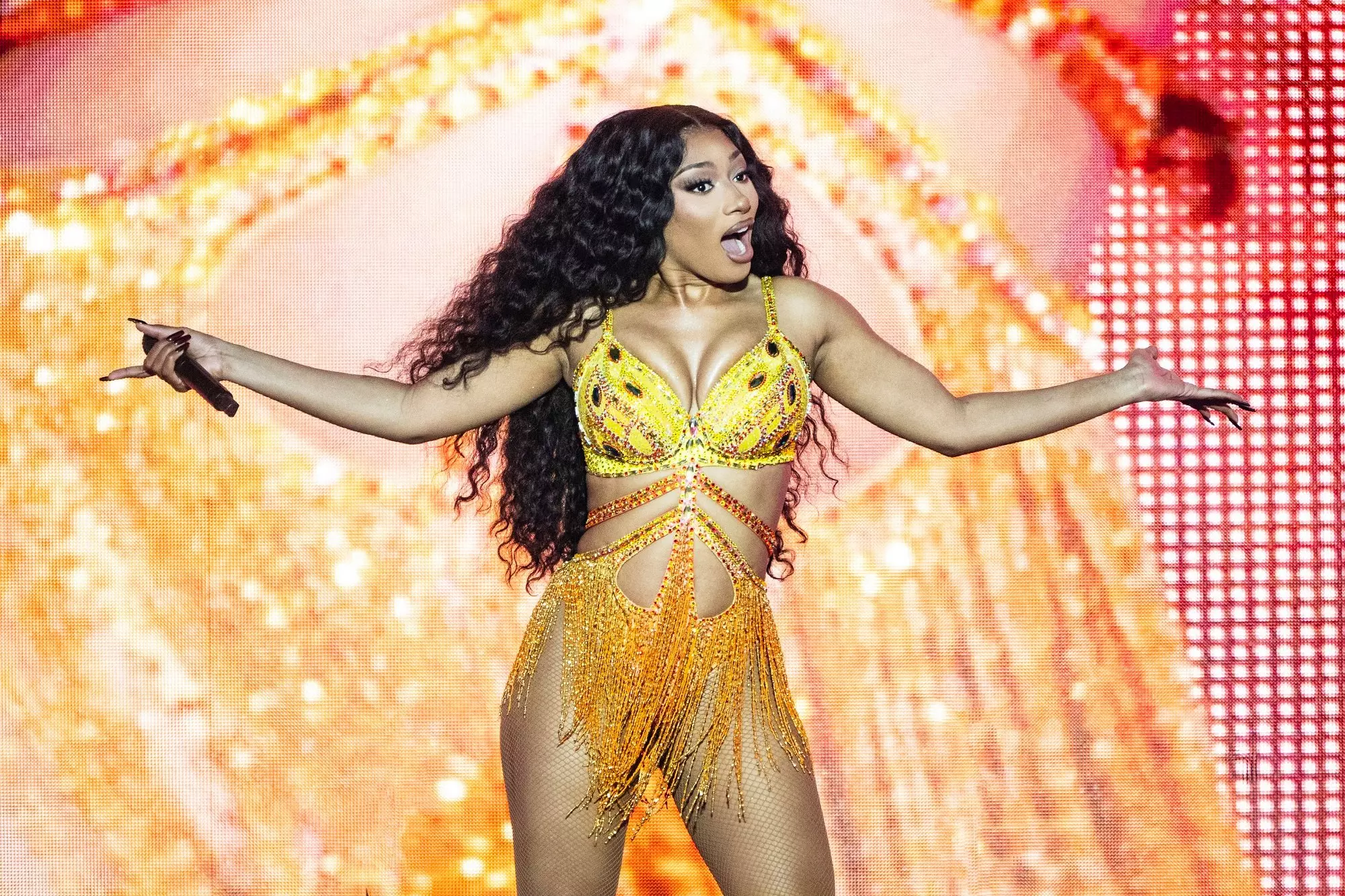
6 Takeaways From Megan Thee Stallion's 'Megan': Snakes, Shots & Self-Assurance
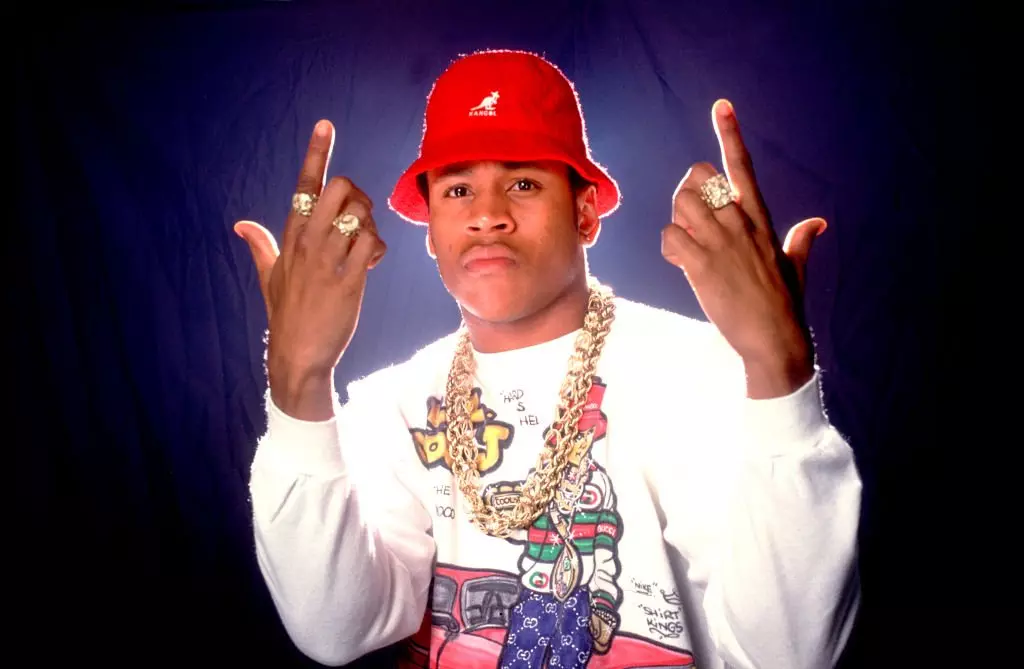
Celebrate 40 Years Of Def Jam With 15 Albums That Show Its Influence & Legacy
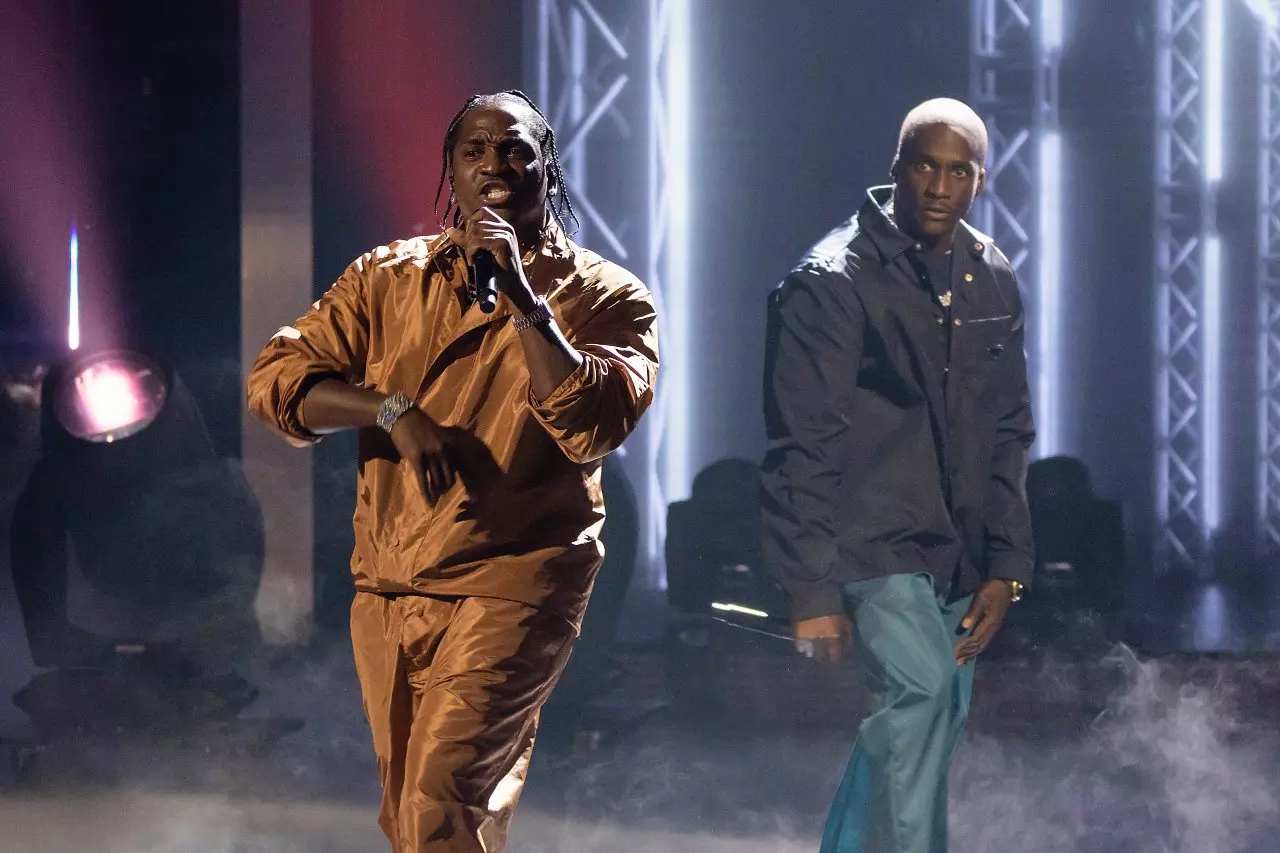
Everything We Know About Clipse's First Album In 15 Years: Pusha T And Malice Rise Again
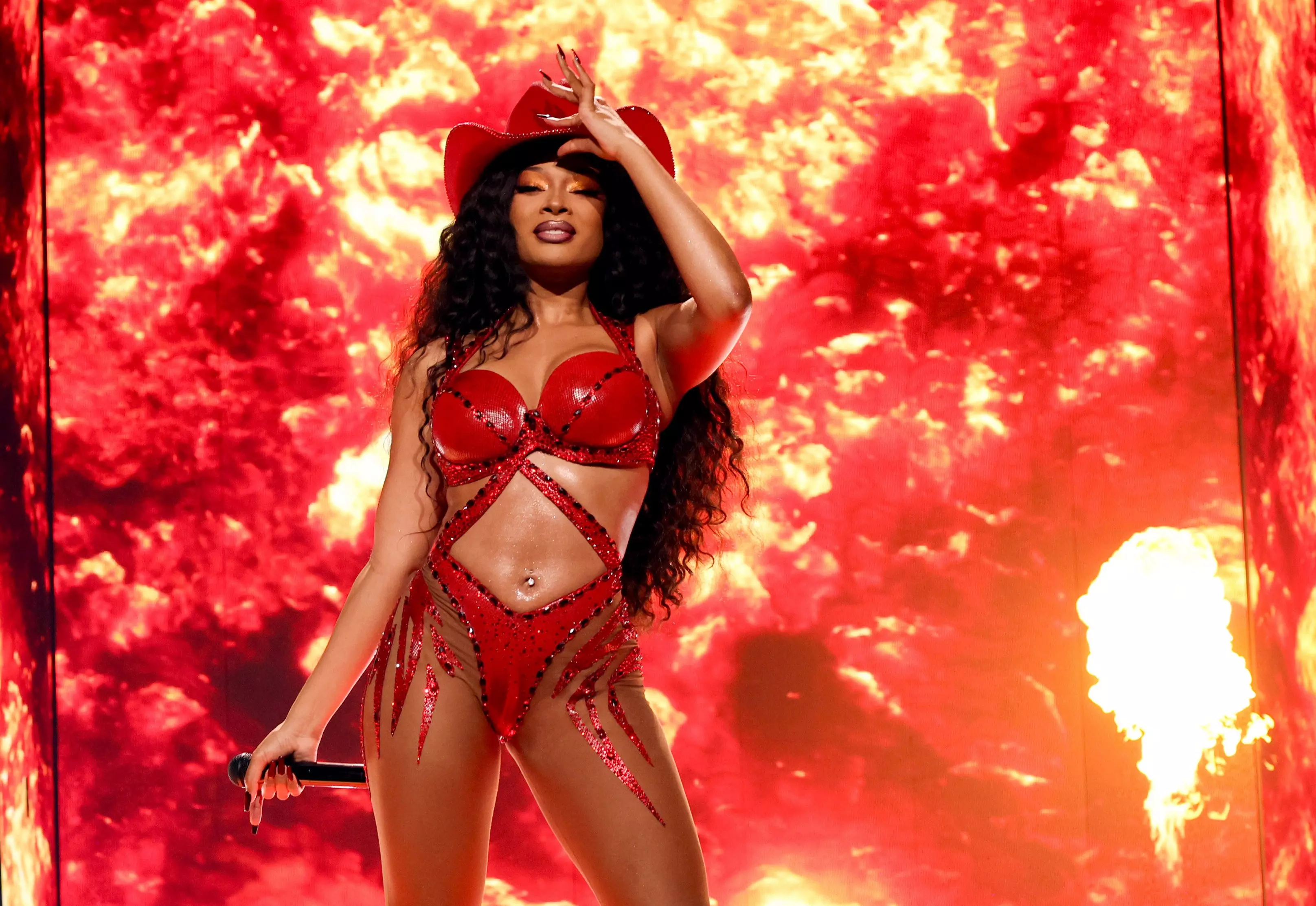
5 Iconic Moments From Megan Thee Stallion's Houston Hometown Shows
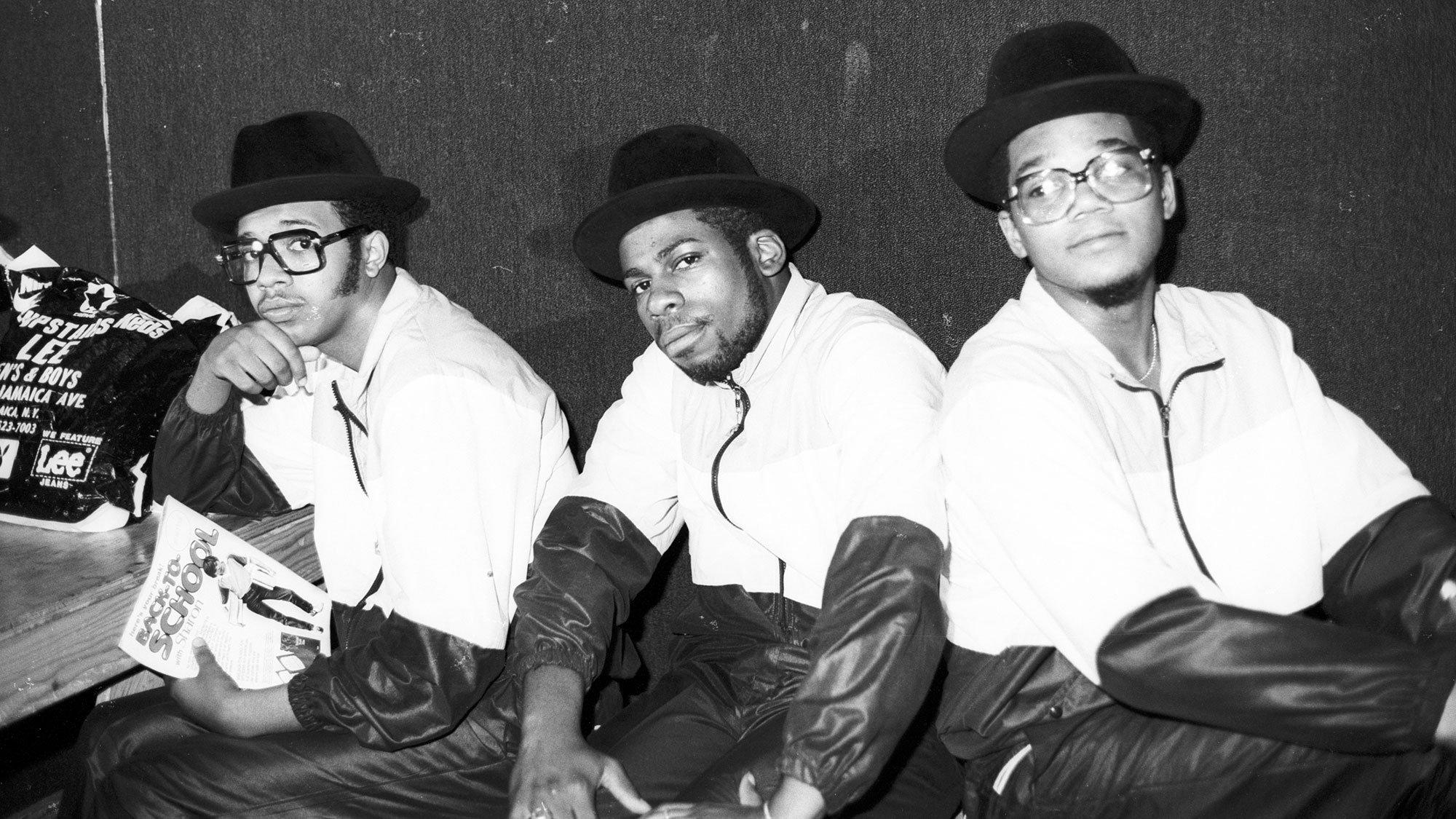
Photo: Michael Ochs Archives/Getty Images
feature
'Run-DMC' At 40: The Debut Album That Paved The Way For Hip-Hop's Future
Forty years ago, Run-DMC released their groundbreaking self-titled album, which would undeniably change the course of hip-hop. Here's how three guys from Queens, New York, defined what it meant to be "old school" with a record that remains influential.
"You don't know that people are going to 40 years later call you up and say, ‘Can you talk about this record from 40 years ago?’"
That was Cory Robbins, former president of Profile Records, reaction to speaking to Grammy.com about one of the first albums his then-fledgling label released. Run-DMC’s self-titled debut made its way into the world four decades ago this week on March 27, 1984 and established the group, in Robbins’ words, "the Beatles of hip-hop."
Rarely in music, or anything else, is there a clear demarcation between old and new. Styles change gradually, and artistic movements usually get contextualized, and often even named, after they’ve already passed from the scene. But Run-DMC the album, and the singles that led up to it, were a definitive breaking point. Rap before it instantly, and eternally, became “old school.” And three guys from Hollis, Queens — Joseph "Run" Simmons, Jason "Jam Master Jay" Mizell, Darryl "D.M.C." McDaniels — helped turn a burgeoning genre on its head.
What exactly was different about Run-DMC? Some of the answers can be glimpsed by a look at the record’s opening song. "Hard Times" is a cover of a Kurtis Blow track from his 1980 debut album. The connection makes sense. Kurtis and Run’s older brother Russell Simmons met in college, and Russell quickly became the rapper’s manager. That led to Run working as Kurtis’ DJ. Larry Smith, who produced Run-DMC, even played on Kurtis’ original version of the song.
But despite those tie-ins, the two takes on "Hard Times" are night and day. Kurtis Blow’s is exactly what rap music was in its earliest recorded form: a full band playing something familiar (in this case, a James Brown-esque groove, bridge and percussion breakdown inclusive.)
What Run-DMC does with it is entirely different. The song is stripped down to its bare essence. There’s a drum machine, a sole repeated keyboard stab, vocals, and… well, that’s about it. No solos, no guitar, no band at all. Run and DMC are trading off lines in an aggressive near-shout. It’s simple and ruthlessly effective, a throwback to the then-fading culture of live park jams. But it was so starkly different from other rap recordings of the time, which were pretty much all in the style of Blow’s record, that it felt new and vital.
"Production-wise, Sugar Hill [the record label that released many key early rap singles] built themselves on the model of Motown, which is to say, they had their own production studios and they had a house band and they recorded on the premises," explains Bill Adler, who handled PR for Run-DMC and other key rap acts at the time.
"They made magnificent records, but that’s not how rap was performed in parks," he continues. "It’s not how it was performed live by the kids who were actually making the music."
Run-DMC’s musical aesthetic was, in some ways, a lucky accident. Larry Smith, the musician who produced the album, had worked with a band previously. In fact, the reason two of the songs on the album bear the subtitle "Krush Groove" is because the drum patterns are taken from his band Orange Krush’s song “Action.”
Read more: Essential Hip-Hop Releases From The 1970s: Kurtis Blow, Grandmaster Flash, Sugarhill Gang & More
But by the time sessions for Run-DMC came around, the money had run out and, despite his desire to have the music done by a full band, Smith was forced to go without them and rely on a drum machine.
His artistic partner on the production side was Russell Simmons. Simmons, who has been accused over the past seven years of numerous instances of sexual assault dating back decades, was back in 1983-4 the person providing the creative vision to match Smith’s musical knowledge.
Orange Krush’s drummer Trevor Gale remembered the dynamic like this (as quoted in Geoff Edgers’ Walk This Way: Run-DMC, Aerosmith, and the Song that Changed American Music Forever): “Larry was the guy who said, 'Play four bars, stop on the fifth bar, come back in on the fourth beat of the fifth bar.' Russell was the guy that was there that said, ‘I don’t like how that feels. Make it sound like mashed potato with gravy on it.’”
Explore The Artists Who Changed Hip-Hop
50 Artists Who Changed Rap: Jay-Z, The Notorious B.I.G., Dr. Dre, Nicki Minaj, Kendrick Lamar, Eminem & More
Hip-Hop Just Rang In 50 Years As A Genre. What Will Its Next 50 Years Look Like?

Watch Outkast Humbly Win Album Of The Year For 'Speakerboxxx/The Love Below' In 2004 | GRAMMY Rewind
A Brief History Of Hip-Hop At 50: Rap's Evolution From A Bronx Party To The GRAMMY Stage
GRAMMY Museum To Celebrate 50 Years Of Hip-Hop With 'Hip-Hop America: The Mixtape Exhibit' Opening Oct. 7

Watch Eminem Show Love to Detroit And Rihanna During Best Rap Album Win In 2011 | GRAMMY Rewind
Listen To GRAMMY.com's 50th Anniversary Of Hip-Hop Playlist: 50 Songs That Show The Genre's Evolution
14 New Female Hip-Hop Artists To Know In 2023: Lil Simz, Ice Spice, Babyxsosa & More
6 Artists Expanding The Boundaries Of Hip-Hop In 2023: Lil Yachty, McKinley Dixon, Princess Nokia & More
Watch 41 Bring The Hype With A Cover Of DMX's Hit "Party Up (Up In Here)" | Hip-Hop Re:Defined
The 10 Most Controversial Samples In Hip-Hop History

Watch Lauryn Hill Win Best New Artist At The 1999 GRAMMYs | GRAMMY Rewind
19 Concerts And Events Celebrating The 50th Anniversary Of Hip-Hop
Founding Father DJ Kool Herc & First Lady Cindy Campbell Celebrate Hip-Hop’s 50th Anniversary
A Guide To New York Hip-Hop: Unpacking The Sound Of Rap's Birthplace From The Bronx To Staten Island
A Guide To Southern California Hip-Hop: Definitive Releases, Artists & Subgenres From L.A. & Beyond
10 Crucial Hip-Hop Albums Turning 30 In 2023: 'Enter The Wu-Tang,' 'DoggyStyle,' 'Buhloone Mindstate' & More
The Nicki Minaj Essentials: 15 Singles To Showcase Her Rap And Pop Versatility
11 Hip-Hop Subgenres To Know: From Jersey Club To G-Funk And Drill
5 Essential Hip-Hop Releases From The 2020s: Drake, Lil Baby, Ice Spice, 21 Savage & More
A Guide To Southern Hip-Hop: Definitive Releases, Artists & Subgenres From The Dirty South
A Guide To Bay Area Hip-Hop: Definitive Releases, Artists & Subgenres From Northern California
A Guide To Texas Hip-Hop: Definitive Releases, Artists & Events

Ludacris Dedicates 2007 Best Rap Album GRAMMY To His Dad | GRAMMY Rewind
Unearthing 'Diamonds': Lil Peep Collaborator ILoveMakonnen Shares The Story Behind Their Long-Awaited Album
10 Bingeworthy Hip-Hop Podcasts: From "Caresha Please" To "Trapital"
Revisiting 'The Miseducation Of Lauryn Hill': Why The Multiple GRAMMY-Winning Record Is Still Everything 25 Years Later
Watch Asha Imuno Personalize Kendrick Lamar's "i" With A Sparkling New Chorus | Hip-Hop Re:Defined
10 Must-See Exhibitions And Activations Celebrating The 50th Anniversary Of Hip-Hop
5 Artists Showing The Future Of AAPI Representation In Rap: Audrey Nuna, TiaCorine & More
'Invasion of Privacy' Turns 5: How Cardi B's Bold Debut Album Redefined Millennial Hip-Hop
10 Songs That Show Doja Cat’s Rap Skills: From "Vegas" To "Tia Tamara" & "Rules"
Watch Olen Put A Dreamy, Melodic Spin On Childish Gambino's "Heartbeat" | Hip-Hop Re:Defined
6 Must-Watch Hip-Hop Documentaries: 'Hip-Hop x Siempre,' 'My Mic Sounds Nice' & More...
Essential Hip-Hop Releases From The 2010s: Ye, Cardi B, Kendrick Lamar & More
6 Takeaways From Netflix's "Ladies First: A Story Of Women In Hip-Hop"
How Drake & 21 Savage Became Rap's In-Demand Duo: A Timeline Of Their Friendship, Collabs, Lawsuits And More
5 Takeaways From Travis Scott's New Album 'UTOPIA'
Essential Hip-Hop Releases From The 2000s: T.I., Lil Wayne, Kid Cudi & More
Songbook: How Jay-Z Created The 'Blueprint' For Rap's Greatest Of All Time
Ladies First: 10 Essential Albums By Female Rappers

How Megan Thee Stallion Turned Viral Fame Into A GRAMMY-Winning Rap Career | Black Sounds Beautiful
How Hip-Hop Took Over The 2023 GRAMMYs, From The Golden Anniversary To 'God Did'
5 Things We Learned At "An Evening With Chuck D" At The GRAMMY Museum
Remembering De La Soul’s David Jolicoeur, a.k.a. Dave and Trugoy the Dove: 5 Essential Tracks
Catching Up With Hank Shocklee: From Architecting The Sound Of Public Enemy To Pop Hits & The Silver Screen
Meet The First-Time GRAMMY Nominee: GloRilla On Bonding with Cardi B, How Faith And Manifestation Helped Her Achieve Success
Hip-Hop's Secret Weapon: Producer Boi-1da On Working With Kendrick, Staying Humble And Doing The Unorthodox
Essential Hip-Hop Releases From The 1990s: Snoop Dogg, Digable Planets, Jay-Z & More
10 Albums That Showcase The Deep Connection Between Hip-Hop And Jazz: De La Soul, A Tribe Called Quest, Kendrick Lamar & More
Hip-Hop Education: How 50 Years Of Music & Culture Impact Curricula Worldwide
Women In Hip-Hop: 7 Trailblazers Whose Behind-The-Scenes Efforts Define The Culture

Watch Flavor Flav Crash Young MC's Speech After "Bust A Move" Wins In 1990 | GRAMMY Rewind
Essential Hip-Hop Releases From The 1980s: Slick Rick, RUN-D.M.C., De La Soul & More
Lighters Up! 10 Essential Reggae Hip-Hop Fusions

How Lil Nas X Turned The Industry On Its Head With "Old Town Road" & Beyond | Black Sounds Beautiful
9 Teen Girls Who Built Hip-Hop: Roxanne Shante, J.J. Fadd, Angie Martinez & More
Essential Hip-Hop Releases From The 1970s: Kurtis Blow, Grandmaster Flash, Sugarhill Gang & More
Killer Mike Says His New Album, 'Michael,' Is "Like A Prodigal Son Coming Home"
5 Takeaways From 'TLC Forever': Left-Eye's Misunderstood Reputation, Chilli's Motherhood Revelation, T-Boz's Health Struggles & More
Watch Eva B Perform "Sunrise In Lyari" Through The Streets Of Pakistan | Global Spin
It wasn’t just the music that set Run-DMC apart from its predecessors. Their look was also starkly different, and that influenced everything about the group, including the way their audience viewed them.
Most of the first generation of recorded rappers were, Bill Adler remembers, influenced visually by either Michael Jackson or George Clinton and Parliament-Funkadelic. Run-DMC was different.
"Their fashion sense was very street oriented," Adler explains. "And that was something that emanated from Jam Master Jay. Jason just always had a ton of style. He got a lot of his sartorial style from his older brother, Marvin Thompson. Jay looked up to his older brother and kind of dressed the way that Marvin did, including the Stetson hat.
"When Run and D told Russ, Jason is going to be our deejay, Russell got one look at Jay and said, ‘Okay, from now on, you guys are going to dress like him.’"
Run, DMC, and Jay looked like their audience. That not only set them apart from the costumed likes of Grandmaster Flash and the Furious Five, it also cemented the group’s relationship with their listeners.
"When you saw Run-DMC, you didn’t see celebrity. You saw yourself," DMC said in the group’s recent docuseries.
Read more: 20 Iconic Hip-Hop Style Moments: From Run-D.M.C. To Runways
Another thing that set Run-DMC (the album) and Run-DMC (the group) apart from what came before was the fact that they released a cohesive rap album. Nine songs that all belonged together, not just a collection of already-released singles and some novelties. Rappers had released albums prior to Run-DMC, but that’s exactly what they were: hits and some other stuff — sung love ballads or rock and roll covers, or other experiments rightfully near-forgotten.
"There were a few [rap] albums [at the time], but they were pretty crappy. They were usually just a bunch of singles thrown together," Cory Robbins recalls.
Not this album. It set a template that lasted for years: Some social commentary, some bragging, a song or two to show off the DJ. A balance of records aimed at the radio and at the hard-core fans. You can still see traces of Run-DMC in pretty much every rap album released today.
Listeners and critics reacted. The album got a four-star review in Rolling Stone with “the music…that backs these tracks is surprisingly varied, for all its bare bones” and an A minus from Robert Christgau who claimed “It's easily the canniest and most formally sustained rap album ever.” Just nine months after its release, Run-DMC was certified gold, the first rap LP ever to earn that honor. "Rock Box" also single-handedly invented rap-rock, thanks to Eddie Martinez’s loud guitars.
There is another major way in which the record was revolutionary. The video for "Rock Box" was the first rap video to ever get into regular rotation on MTV and, the first true rap video ever played on the channel at all, period. Run-DMC’s rise to MTV fame represented a significant moment in breaking racial barriers in mainstream music broadcasting.
"There’s no overstating the importance of that video," Adler tells me. vIt broke through the color line at MTV and opened the door to a cataclysmic change."
"Everybody watched MTV forty years ago," Robbins agrees. "It was a phenomenal thing nationwide. Even if we got three or four plays a week of ‘Rock Box’ on MTV, that did move the needle."
All of this: the new musical style, the relatable image, the MTV pathbreaking, and the attendant critical love and huge sales (well over 10 times what their label head was expecting when he commissioned the album from a reluctant Russell Simmons — "I hoping it would sell thirty or forty thousand," Robbins says now): all of it contributed to making Run-DMC what it is: a game-changer.
"It was the first serious rap album," Robbins tells me. And while you could well accuse him of bias — the group making an album at all was his idea in the first place — he’s absolutely right.
Run-DMC changed everything. It split the rap world into old school and new school, and things would never be the same.
Perhaps the record’s only flaw is one that wouldn’t be discovered for years. As we’re about to get off the phone, Robbins tells me about a mistake on the cover, one he didn’t notice until the record was printed and it was too late.
There was something (Robbins doesn’t quite recall what) between Run and DMC in the cover photo. The art director didn’t like it and proceeded to airbrush it out. But he missed something. On the vinyl, if you look between the letters "M" and "C,", you can see DMC’s disembodied left hand, floating ghost-like in mid-air. While it was an oversight, it’s hard not to see this as a sign, a sort of premonition that the album itself would hang over all of hip-hop, with an influence that might be hard to see at first, but that never goes away.
A Guide To New York Hip-Hop: Unpacking The Sound Of Rap's Birthplace From The Bronx To Staten Island
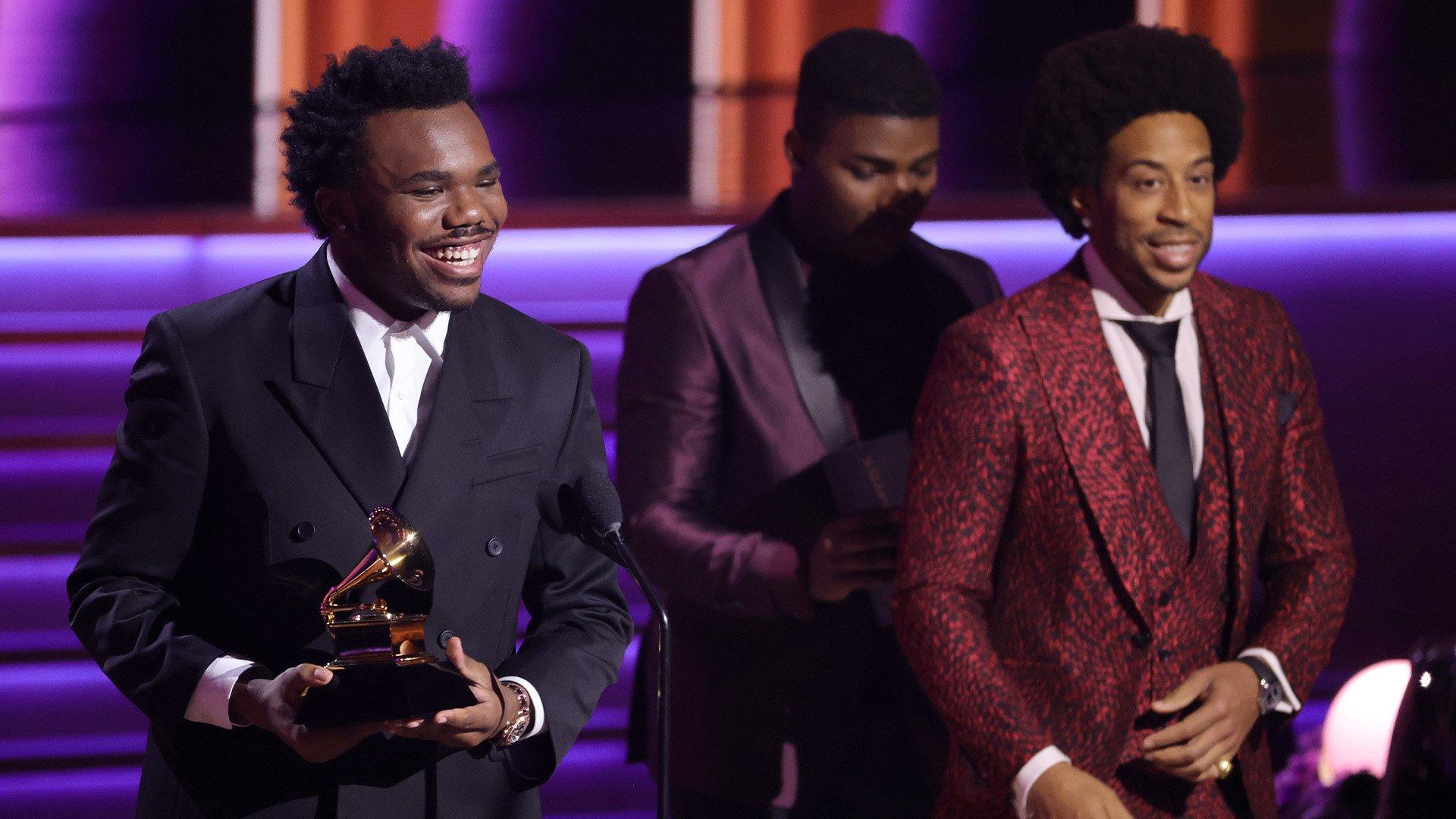
Photo: Matt Winkelmeyer/Getty Images
video
GRAMMY Rewind: Watch Baby Keem Celebrate "Family Ties" During Best Rap Performance Win In 2022
Revisit the moment budding rapper Baby Keem won his first-ever gramophone for Best Rap Performance at the 2022 GRAMMY Awards for his Kendrick Lamar collab "Family Ties."
For Baby Keem and Kendrick Lamar, The Melodic Blue was a family affair. The two cousins collaborated on three tracks from Keem's 2021 debut LP, "Range Brothers," "Vent," and "Family Ties." And in 2022, the latter helped the pair celebrate a GRAMMY victory.
In this episode of GRAMMY Rewind, turn the clock back to the night Baby Keem accepted Best Rap Performance for "Family Ties," marking the first GRAMMY win of his career.
"Wow, nothing could prepare me for this moment," Baby Keem said at the start of his speech.
He began listing praise for his "supporting system," including his family and "the women that raised me and shaped me to become the man I am."
Before heading off the stage, he acknowledged his team, who "helped shape everything we have going on behind the scenes," including Lamar. "Thank you everybody. This is a dream."
Baby Keem received four nominations in total at the 2022 GRAMMYs. He was also up for Best New Artist, Best Rap Song, and Album Of The Year as a featured artist on Kanye West's Donda.
Press play on the video above to watch Baby Keem's complete acceptance speech for Best Rap Performance at the 2022 GRAMMYs, and check back to GRAMMY.com for more new episodes of GRAMMY Rewind.
How The 2024 GRAMMYs Saw The Return Of Music Heroes & Birthed New Icons
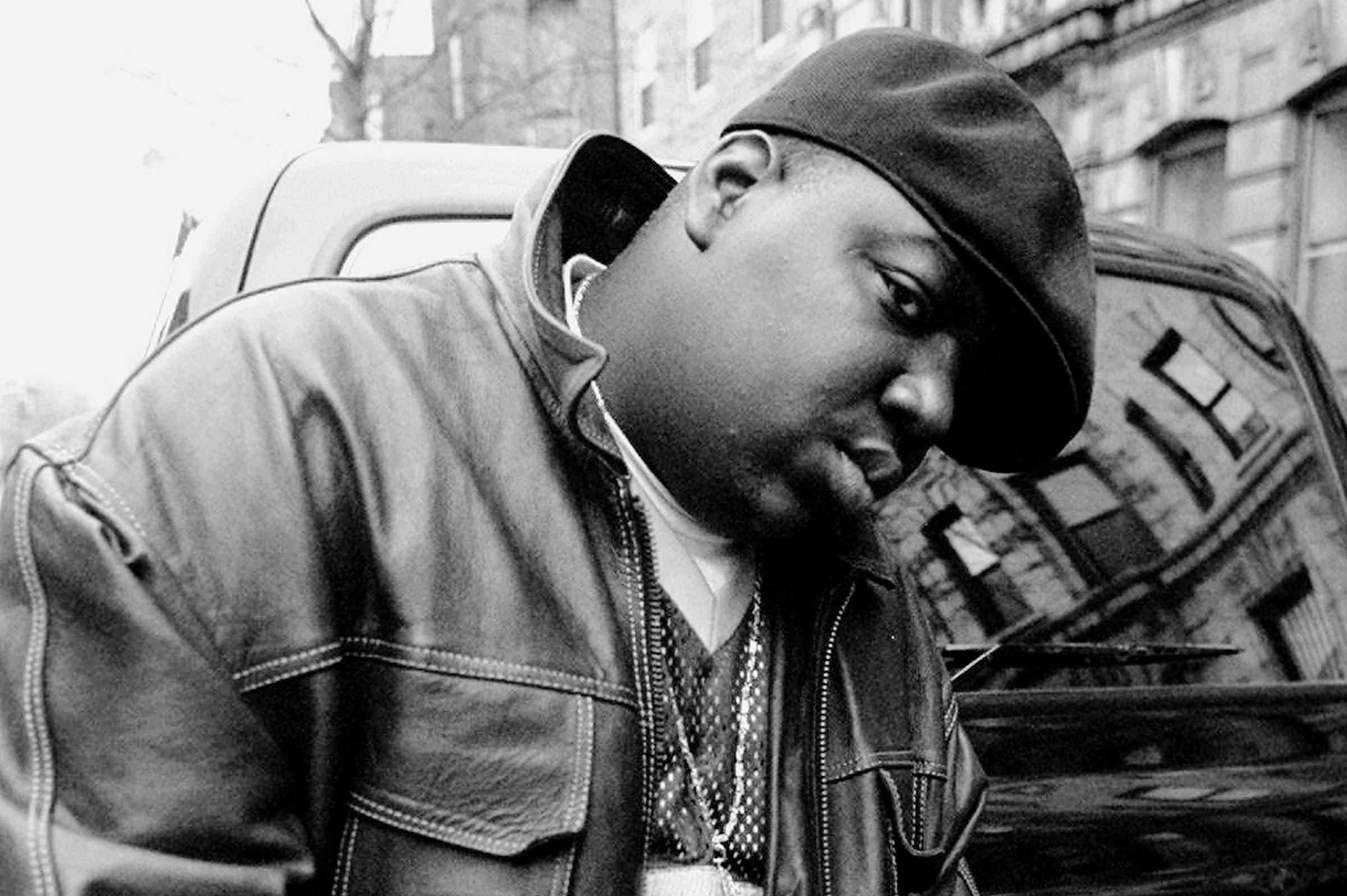
Photo: Clarence Davis/NY Daily News Archive via Getty Images
feature
How 1994 Changed The Game For Hip-Hop
With debuts from major artists including Biggie and Outkast, to the apex of boom bap, the dominance of multi-producer albums, and the arrival of the South as an epicenter of hip-hop, 1994 was one of the most important years in the culture's history.
While significant attention was devoted to the celebration of hip-hop in 2023 — an acknowledgement of what is widely acknowledged as its 50th anniversary — another important anniversary in hip-hop is happening this year as well. Specifically, it’s been 30 years since 1994, when a new generation entered the music industry and set the genre on a course that in many ways continues until today.
There are many ways to look at 1994: lists of great albums (here’s a top 50 to get you started); a look back at what fans and tastemakers were actually listening to at the time; the best overlooked obscurities. But the best way to really understand why a single 365 three decades ago had such an impact is to narrow our focus to look at the important debut albums released that year.
An artist’s or group’s debut is their entry into the wider musical conversation, their first full statement about who they are and where in the landscape they see themselves. The debuts released in 1994 — which include the Notorious B.I.G.'s Ready to Die, Nas' Illmatic and Southernplayalisticadillacmuzik from Outkast — were notable not only in their own right, but because of the insight they give us into wider trends in rap.
Read on for some of the ways that 1994's debut records demonstrated what was happening in rap at the time, and showed us the way forward.
Hip-Hop Became More Than Just An East & West Coast Thing
The debut albums that moved rap music in 1994 were geographically varied, which was important for a music scene that was still, from a national perspective, largely tied to the media centers at the coasts. Yes, there were New York artists (Biggie and Nas most notably, as well as O.C., Jeru the Damaja, the Beatnuts, and Keith Murray). The West Coast G-funk domination, which began in late 1992 with Dr. Dre’s The Chronic, continued with Dre’s step brother Warren G.
But the huge number of important debuts from other places around the country in 1994 showed that rap music had developed mature scenes in multiple cities — scenes that fans from around the country were starting to pay significant attention to.
To begin with, there was Houston. The Geto Boys were arguably the first artists from the city to gain national attention (and controversy) several years prior. By 1994, the city’s scene had expanded enough to allow a variety of notable debuts, of wildly different styles, to make their way into the marketplace.
Read more: A Guide To Texas Hip-Hop: Definitive Releases, Artists & Events
The Rap-A-Lot label that first brought the Geto Boys to the world’s attention branched out with Big Mike’s Somethin’ Serious and the Odd Squad’s Fadanuf Fa Erybody!! Both had bluesy, soulful sounds that were quickly becoming the label’s trademark — in no small part due to their main producers, N.O. Joe and Mike Dean. In addition, an entirely separate style centered around the slowed-down mixes of DJ Screw began to expand outside of the South Side with the debut release by Screwed Up Click member E.S.G.
There were also notable debut albums by artists and groups from Cleveland (Bone Thugs-N-Harmony, Creepin on ah Come Up), Oakland (Saafir and Casual), and of course Atlanta — more about that last one later.
1994 Saw The Pinnacle Of Boom-Bap
Popularized by KRS-One’s 1993 album Return of the Boom Bap, the term "boom bap" started as an onomatopoeic way of referring to the sound of a standard rap drum pattern — the "boom" of a kick drum on the downbeat, followed by the "bap" of a snare on the backbeat.
The style that would grow to be associated with that name (though it was not much-used at the time) was at its apex in 1994. A handful of primarily East Coast producers and groups were beginning a new sonic conversation, using innovations like filtered bass lines while competing to see who could flip the now standard sample sources in ever-more creative ways.
Most of the producers at the height of this style — DJ Premier, Buckwild, RZA, Large Professor, Pete Rock and the Beatnuts, to name a few — worked on notable debuts that year. Premier produced all of Jeru the Damaja’s The Sun Rises in the East. Buckwild helmed nearly the entirety of O.C.’s debut Word…Life. RZA was responsible for Method Man’s Tical. The Beatnuts took care of their own full-length Street Level. Easy Mo Bee and Premier both played a part in Biggie’s Ready to Die. And then there was Illmatic, which featured a veritable who’s who of production elites: Premier, L.E.S., Large Professor, Pete Rock, and Q-Tip.
The work the producers did on these records was some of the best of their respective careers. Even now, putting on tracks like O.C.’s "Time’s Up" (Buckwild), Jeru’s "Come Clean" (Premier), Meth’s "Bring the Pain" (RZA), Biggie’s "The What" (Easy Mo Bee), or Nas’ "The World Is Yours" (Pete Rock) will get heads nodding.
Major Releases Balanced Street Sounds & Commercial Appeal
"Rap is not pop/If you call it that, then stop," spit Q-Tip on 1991’s "Check the Rhime." Two years later, De La Soul were adamant that "It might blow up, but it won’t go pop." In 1994, the division between rap and pop — under attack at least since Biz Markie made something for the radio back in the ‘80s — began to collapse entirely thanks to the team of the Notorious B.I.G. and his label head and producer Sean "Puffy" Combs.
Biggie was the hardcore rhymer who wanted to impress his peers while spitting about "Party & Bulls—." Puff was the businessman who wanted his artist to sell millions and be on the radio. The result of their yin-and-yang was Ready to Die, an album that perfectly balanced these ambitions.
This template — hardcore songs like "Machine Gun Funk" for the die-hards, sing-a-longs like "Juicy" for the newly curious — is one that Big’s good friend Jay-Z would employ while climbing to his current iconic status.
Solo Stars Broke Out Of Crews
One major thing that happened in 1994 is that new artists were created not out of whole cloth, but out of existing rap crews. Warren G exploded into stardom with his debut Regulate… G Funk Era. He came out of the Death Row Records axis — he was Dre’s stepbrother, and had been in a group with a pre-fame Snoop Dogg. Across the country, Method Man sprang out of the Wu-Tang collective and within a year had his own hit single with "I’ll Be There For You/You’re All I Need To Get By."
Anyone who listened to the Odd Squad’s album could tell that there was a group member bound for solo success: Devin the Dude. Keith Murray popped out of the Def Squad. Casual came out of the Bay Area’s Hieroglyphics.
Read more: A Guide To Bay Area Hip-Hop: Definitive Releases, Artists & Subgenres From Northern California
This would be the model for years to come: Create a group of artists and attempt, one by one, to break them out as stars. You could see it in Roc-a-fella, Ruff Ryders, and countless other crews towards the end of the ‘90s and the beginning of the new millennium.
Multi-Producer Albums Began To Dominate
Illmatic was not the first rap album to feature multiple prominent producers. However, it quickly became the most influential. The album’s near-universal critical acclaim — it earned a perfect five-mic score in The Source — meant that its strategy of gathering all of the top production talent together for one album would quickly become the standard.
Within less than a decade, the production credits on major rap albums would begin to look nearly identical: names like the Neptunes, Timbaland, Premier, Kanye West, and the Trackmasters would pop up on album after album. By the time Jay-Z said he’d get you "bling like the Neptunes sound," it became de rigueur to have a Neptunes beat on your album, and to fill out the rest of the tracklist with other big names (and perhaps a few lesser-known ones to save money).
The South Got Something To Say
If there’s one city that can safely be said to be the center of rap music for the past decade or so, it’s Atlanta. While the ATL has had rappers of note since Shy-D and Raheem the Dream, it was a group that debuted in 1994 that really set the stage for the city’s takeover.
Outkast’s Southernplayalisticadillacmuzik was the work of two young, ambitious teenagers, along with the production collective Organized Noize. The group’s first video was directed by none other than Puffy. Biggie fell so in love with the city that he toyed with moving there.
Outkast's debut album won Best New Artist and Best New Rap of the Year at the 1995 Source Awards, though the duo of André 3000 and Big Boi walked on stage to accept their award to a chorus of boos. The disrespect only pushed André to affirm the South's place on the rap map, famously telling the audience, "The South got something to say."
Read more: A Guide To Southern Hip-Hop: Definitive Releases, Artists & Subgenres From The Dirty South
Outkast’s success meant that they kept on making innovative albums for several more years, as did other members of their Dungeon Family crew. This brought energy and attention to the city, as did the success of Jermain Dupri’s So So Def label. Then came the "snap" movement of the 2000s, and of course trap music, which had its roots in aughts-era Atlanta artists like T.I. and producers like Shawty Redd and DJ Toomp.
But in the 2010s a new artist would make Atlanta explode, and he traced his lineage straight back to the Dungeon. Future is the first cousin of Organized Noize member Rico Wade, and was part of the so-called "second generation" of the Dungeon Family back when he went by "Meathead." His world-beating success over the past decade-plus has been a cornerstone in Atlanta’s rise to the top of the rap world. Young Thug, who has cited Future as an influence, has sparked a veritable ecosystem of sound-alikes and proteges, some of whom have themselves gone on to be major artists.
Atlanta’s reign at the top of the rap world, some theorize, may finally be coming to an end, at least in part because of police pressure. But the city has had a decade-plus run as the de facto capital of rap, and that’s thanks in no small part to Outkast.
Why 1998 Was Hip-Hop's Most Mature Year: From The Rise Of The Underground To Artist Masterworks
